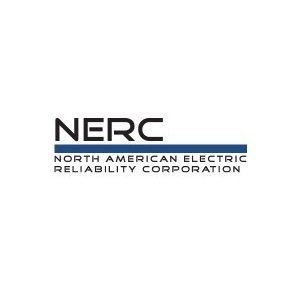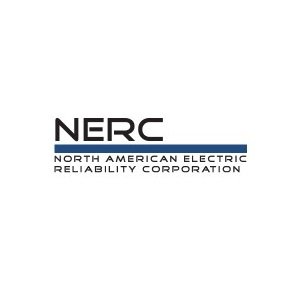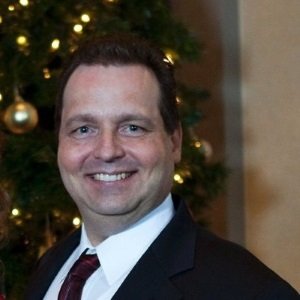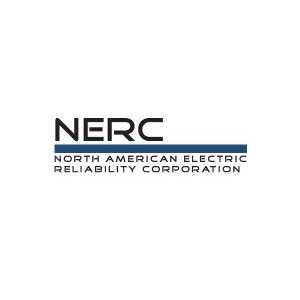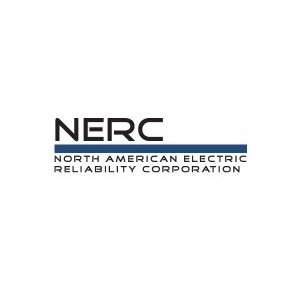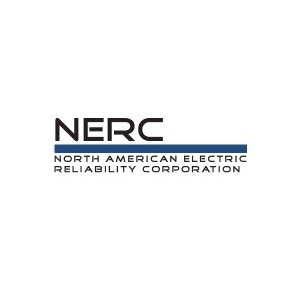NERC - Experts & Thought Leaders
Latest North American Electric Reliability Corporation (NERC) news & announcements
As extreme weather continues to strain the nation’s electric grid, FERC Chairman Rich Glick and Jim Robb, President, and CEO of NERC, encouraged the North American Energy Standards Board (NAESB) to convene a forum to identify solutions to the reliability challenges facing the nation’s natural gas system and bulk electric system. In their joint letter, Glick and Robb recommended that NAESB convene the forum, as outlined in one of the key recommendations from the FERC-NERC report on the February 2021 freeze in Texas and the South Central U.S. caused by Winter Storm Uri. Address recurring challenges Key Recommendation 7 in the report, issued in November 2021, recommended that FERC consider establishing a forum to identify actions that will improve the reliability of the natural gas infrastructure system as necessary to support the bulk power system, and to address recurring challenges stemming from natural gas-electric infrastructure interdependency. NAESB, an American National Standards Institute-accredited convener of both the gas and electric markets NAESB, an American National Standards Institute-accredited convener of both the gas and electric markets with representation from all segments of the supply chain, “Is uniquely positioned to provide support in addressing the report recommendation,” Glick and Robb wrote. “NAESB’s long history with the industry demonstrates its ability to analyze challenging issues concerning market coordination while delivering balanced, consensus-based solutions that lead to improved operations in both markets.” Natural gas generation The letter encourages NAESB to coordinate with FERC and NERC staff, and with the National Association of Regulatory Utility Commissioners. “The record-setting heat we’ve experienced this summer, just like the brutal cold during Winter Storm Uri last year, is a stark reminder that extreme weather remains a threat to the reliability of our energy infrastructure,” Glick said. “We must ensure that our gas and electricity systems will help keep the lights on in the face of an evolving resource mix and the growing effects of climate change.” “In addition to providing resilience during extreme weather events, natural gas generation is a critical bridge fuel because of its operational flexibility, which allows large amounts of variable generation to be integrated reliably into the grid,” said Robb, adding “The role of gas is changing and it is critical that the two systems are planned and operated in an increasingly coordinated manner.”
NERC staff will participate in the Institute of Electrical and Electronics Engineers’ (IEEE) Power & Energy Society (PES) General Meeting that will take place from July 17–21, 2022, in Denver, Colorado, USA. The meeting, ‘Powering a Sustainable Future in a Changing World,’ brings together electric power and energy experts and stakeholders from across the globe to share the latest advancements in technology and ideas that will propel their future. Peer-Reviewed technical papers Several members of NERC’s staff will be presenting a number of peer-reviewed technical papers, as well as participating in the conference as panelists: Svetlana Ekisheva, Principal Data Science Advisor, Advanced System Analytics and Modeling Howard Gugel, Vice President, Engineering and Standards William Lamanna, Senior Engineer Mark Lauby, Senior Vice President and Chief Engineer Mark Olson, Manager, Reliability Assessments Mohammed Osman, Lead Engineer Donna Pratt, Performance Analysis Manager Wei Qiu, Lead Engineer, Event Analysis Ryan Quint, Director, Engineering and Security Integration JP Skeath, Engineer II Lee Thaubald, Senior Application Specialist, Performance Analysis Addressing emergent risks “NERC’s staff provides leadership on issues of reliability, security, and resilience,” said Mark Lauby, NERC’s Senior Vice President and Chief Engineer, adding “Sharing state-of-the-art findings and approaches to address emergent and projected risks to the reliable operation of the bulk power system in a venue like the IEEE PES General Meeting is a crucial part of NERC’s mission as the Electric Reliability Organization. Not only does it provide another venue for collaboration and validation, but the ability to learn from and leverage another important part of the reliability ecosystem.” NERC is honored to take part as a Silver sponsor of this event, furthering the PES mission to be the provider of scientific and engineering information on electric power and energy for the betterment of society.
The ERO Enterprise is excited to announce the Release 4.0 launch of Align, which included enhancements to the Audit and Scheduling functionality that was deployed in December 2021, across the industry as of June 22, 2022. Align is designed to process and track all compliance monitoring and enforcement activities with the goal of improving security and standardizing processes across the ERO Enterprise. New resource management The Align Release 4.0 improvements are highlighted below: Audit/Monitoring Engagement: Implemented several enhancements to improve how the regions and entities perform, and respond to audits. Scheduling: Implemented a new resource management dashboard that shows the status of engagements, providing more flexibility to who can be assigned, and implemented a dashboard that provides the Regions will a full-year view. Open enforcement action In addition, the Align project team migrated Texas RE’s open enforcement action items to the production environment earlier in June and plans to implement Align Release 4.5: Inherent Risk Assessment (IRA) and Compliance Oversight Planning (COP) into production in the third quarter. The NERC Training Site contains all Align and ERO SEL training materials, including training videos and the Start, Stop, Continue Guide as well as Align and ERO SEL user guides.
Insights & Opinions from thought leaders at NERC
HVAC systems account for around 46% of the average U.S. home’s energy consumption. As big users of electricity, air conditioning (AC) systems this summer face continuing concerns about an adequate supply of electricity and the reliability of the U.S. electrical grid. According to a report from the North American Electric Reliability Corporation (NERC), large parts of the country are at either ‘high’ or ‘elevated’ risk of electricity shortfalls this summer. Notably, a large swath down the middle of the country, including the Midwest US region, faces a potential for insufficient operating reserves of electricity in normal peak conditions. Electricity shortage in peak summer months Furthermore, most of the states west of the Mississippi have a potential for insufficient operating reserves in above-normal conditions. With the beginning of the 2022 summer cooling season marked by some of the highest daily temperatures on record, the ‘above-normal’ conditions are less a possibility than a probability. In affected areas, the power grid could be forced to impose rotating blackouts on some of the hottest days of the year. Most of the Eastern United States of America appears to have sufficient operating reserves to meet demand. Lagging transition to 100% clean energy The underlying causes of the electricity shortage include a lagging transition to 100% clean energy The underlying causes of the electricity shortage include a lagging transition to 100% clean energy. While efforts continue to stimulate the next generation of renewable technologies, the development is not keeping up with the growing demand for electricity. Some resources necessary to maintain sufficient electricity supplies, including natural gas and carbon-based fuels, have been targeted by activist interest groups. Beyond recent shutdown of coal and nuclear plants, factors in the shortage include planned maintenance and forced outages, as well as low wind conditions. Implementing new technologies Utility companies are caught in the middle, seeking to satisfy consumer demand, while implementing new technologies, such as next-generation nuclear, carbon and direct air capture, energy storage, hydrogen, geothermal, and other technologies. In the words of California Gov. Gavin Newsom, who stated “However, the situation deals (not) in ideology, (but) in reality.” NERC’s Annual Reliability Assessment NERC’s Annual Reliability Assessment covers four months (June through September) and evaluates electricity generation resources, transmission system adequacy, and energy sufficiency, in order to meet projected summer peak demand and operating reserves. It identifies potential reliability issues of interest and regional topics of concern. In the U.S., the Midcontinent Independent System Operator (MISO) faces capacity shortfalls in its North and Central areas, resulting in high risk of energy emergencies during peak summer conditions. Across the MISO, peak demand projections have increased by 1.7% since last summer, as normal demand patterns resume after the COVID-19 pandemic. Another problem is 2.3% less generation capacity, when compared to the summer of 2021. In Canada, anticipated resource capacity in Saskatchewan will be strained to meet peak demand projections, which have increased 7.5% since 2021. Drought conditions contribute to electricity shortage Drought conditions also contribute to the problem, affecting wide areas of North America Drought conditions also contribute to the problem, affecting wide areas of North America and challenging electricity supplies and having potential impacts on demand. Energy output from hydro-generators throughout most of the Western United States of America is affected by widespread drought and below-normal snowpack, according to NERC. Suppliers of electricity from coal-fired generators are having difficulty obtaining fuel and non-fuel consumables, as supply chains are stressed. Electricity suppliers at the risk of cyber security threats Furthermore, electricity is among the critical infrastructure sectors at risk of cyber security threats from Russia and other potential actors, amid heightened geopolitical tensions. Energy efficiency goals, such as those undertaken by the HVAC industry’s transition to electric heat pumps, can contribute to minimizing the need for electricity, especially helpful during a shortage.
Leveraging Radiant And Hydronics To Help Achieve Decarbonization Goals
DownloadSealed Connectors In Harsh Environments
DownloadPowering And Cooling Next Generation Data Centers
DownloadDebunking Myths To Promote A Bright Future For Heat Pumps
DownloadOptimizing Comfort: The Ultimate HVAC Component Guide
Download